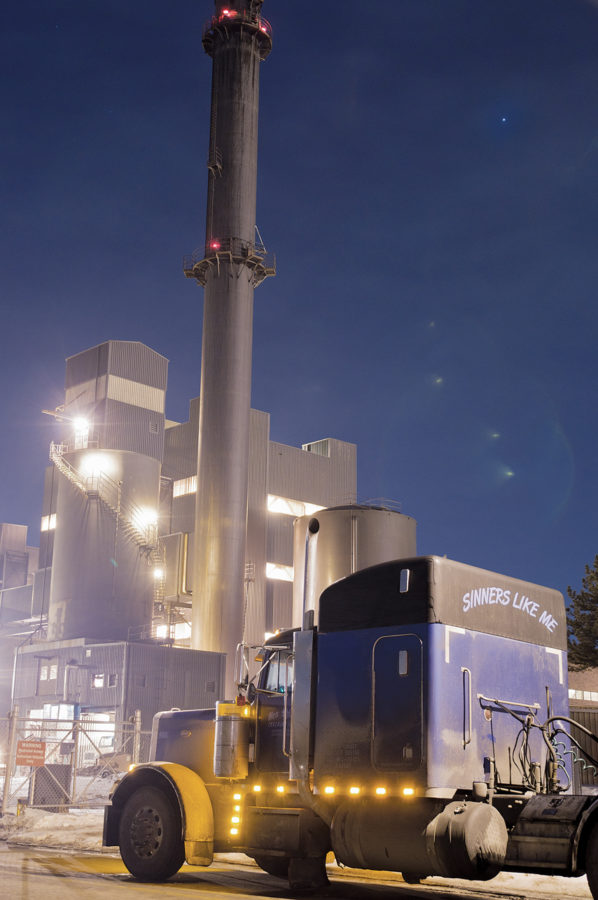Dankbar: Clean coal debate boils down to debate on size of government
Photo: Logan Gaedke/Iowa State Daily
A load of coal from Muscatine is delivered to the ISU Power Plant. Groups want to highlight the dangers of coal and encourage students to call for Iowa State to reduce its usage of coal.
October 18, 2012
As Election Day nears, don’t worry about trying to understand every issue the candidates discuss. Instead, look at the effects of those ideas. There are so many issues that come up in the presidential race and it is next to impossible for voters to be knowledgeable about all of them.
It is possible for voters to look at the candidates’ stance about the appropriate size of government and from there make a reasonable decision of who to vote for. For example, the debate about clean coal actually boils down to a debate about the size of government.
But what actually is clean coal and why are we hearing about it?
I watched the first presidential debate Oct. 3, with my roommates who major in chemistry and environmental science. At a comment made about clean coal, they burst out laughing, saying there was no such thing. Also, this term has made its way into political ads. So I decided to look into it a little more.
In the presidential race, we have seen two distinct opinions develop.
President Barack Obama believes in the investment in green energy. In the past four years, Obama has won more than $10 billion in private investments toward green energy. He plans to promote research and investment in green energy, including clean coal technology, and regulations on harmful energy production.
This belief calls for the federal government to take responsibility. This is consistent with his stances on other issues, such as healthcare, jobs and education.
Republican candidate Mitt Romney does not go into detail about clean coal on his website. But he believes that energy production should be able to control energy production, and it should be certified by federal agencies, but led by individual states. This means that each state could decide how clean its energy is.
This side calls for the federal government to play a more limited role, and for the states to play a larger role. This is consistent with his stances on Medicare and education.
Regardless of who you believe should be responsible for the future of this technology, the federal or state government, clean coal could be a very important technology to the future of the production of energy in America. It is something that people should be aware of, especially in a state that promotes their interest in green energy.
The term “clean coal” was created by R&R Partners. These are the people who brought us the popular “what happens in Vegas, stays in Vegas” slogan. Big companies, such as Duke Power, Peabody Energy and BHP Billiton, latched onto this term by producing a multi-million dollar campaign. They spent $35 million in 2008 alone.
The term “clean coal” refers to the technology used to limit the environmental effects of coal.
Coal as an energy source is very important. The International Energy Agency estimated that 70 percent of the energy used between now and 2050 will come from fossil fuels, such as coal. It is also known as the dirtiest form of fossil fuel energy.
When burning coal for energy, carbon dioxide, sulfur dioxide and nitrogen oxides are released into the atmosphere. These chemicals can cause acid rain, water pollution and human health problems.
There are five types of clean coal technology that stand out: coal washing, wet scrubbers, electrostatic precipitators, gasification, and carbon capture and storage. These technologies use a variety of methods, but one common factor is that each of these technologies is very expensive. The Intergovernmental Panel on Climate Change estimated that carbon capture and storage could add between 50 to 100 percent to coal energy costs, an increase that many companies and Americans are uncomfortable with.
This presents a valid business concern, but it is also a valid demand. If we know the source of multiple problems, shouldn’t a solution be demanded? The use of coal is causing serious harm to our health and environment; therefore it is not out of line for the government (or anybody) to demand an alternative or at least a reduction.
Also, data from demonstration storage projects will not be available until 2013. This means construction on the first carbon capture and storage plants will not start until at least 2020, which means there is plenty of time to debate about which type of technology will be the most practical and create an effective plan.
As Election Day draws near, look at the stances each candidate takes and then think about what the implications of those stances will look like for our nation. Then you will make an informed decision.







